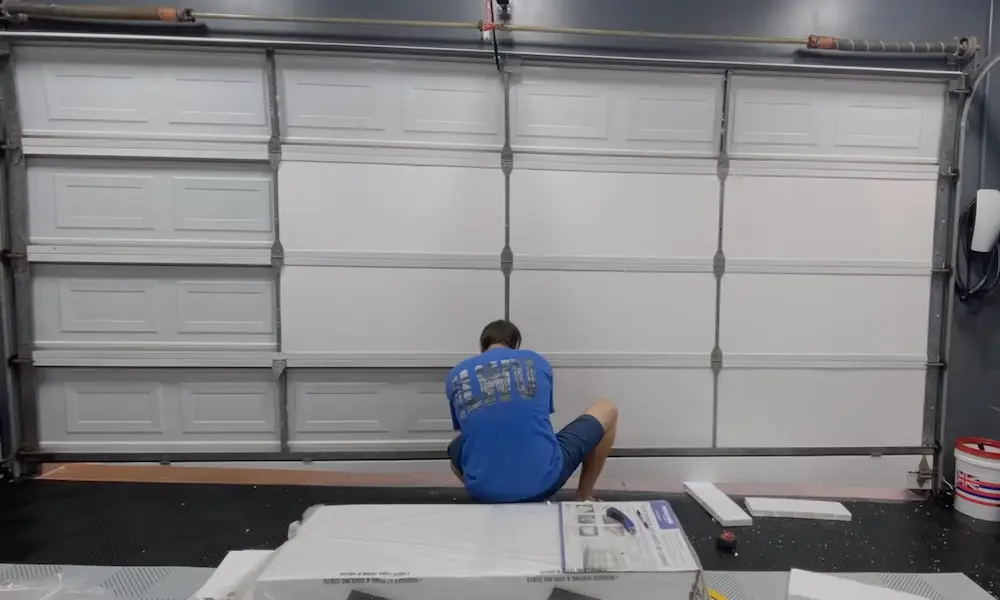Do you need to temporarily disable your garage door sensors? Whether you’re troubleshooting an issue or performing maintenance, there are times when you might need to bypass these safety features. But before you start, it’s important to understand what you’re doing and the risks involved. This guide will walk you through the process safely and effectively.
What Are Garage Door Sensors and Why They Matter
Garage door sensors are small devices mounted near the floor on both sides of your garage door. They create an invisible infrared beam that prevents the door from closing if something breaks that beam. This safety feature has been mandated by federal standards since 1993 to prevent accidents and injuries, especially to children and pets.
When working properly, these sensors:
- Detect obstacles in the door’s path
- Automatically reverse the door if something crosses the beam
- Provide essential protection against entrapment
Common Reasons to Disable Garage Door Sensors
There are several legitimate situations where you might need to temporarily disable your sensors:
Troubleshooting Sensor Issues
If your door won’t close and keeps reversing, the problem often lies with misaligned or dirty sensors. You might need to bypass them to diagnose the issue.
During Maintenance or Repairs
When working on track alignment, spring replacement, or opener upgrades, you may need to disable the sensors temporarily to complete your work without the door constantly reversing.
Sensor Malfunctions
Sometimes sensors can malfunction due to:
- Dust or debris on the lenses
- Water or moisture exposure
- Physical misalignment
- Electrical problems
- Sunlight interference
How to Disable Garage Door Sensors Safely
Here are three reliable methods for temporarily bypassing your garage door sensors:
Method 1: Wire Disconnection Method
This is the most common approach for most garage door systems.
- Cut the power first
- Unplug the garage door opener from the outlet
- Disconnect any backup battery systems
- Verify power is off using a voltage tester
- Locate and identify the sensor wires
- Find where the sensor wires connect to your opener unit
- These are typically thin wires (often white and green) that run from the bottom sensors to the motor unit
- Disconnect the wires
- Using a screwdriver, loosen the terminal screws where the sensor wires connect
- Gently remove the wires from their terminals
- Label the wires with tape to ensure proper reconnection later
- Create a jumper circuit (optional)
- For some models, you’ll need to connect a jumper wire between the terminals
- This completes the circuit and tricks the opener into thinking the sensors are connected
- Use appropriate wire gauge and insulated connectors
- Restore power and test
- Plug the opener back in
- Test the door operation
Method 2: Using the Manual Release
This method doesn’t technically disable the sensors but allows you to operate the door manually without them.
- Locate the emergency release cord
- This is usually a red rope hanging from the trolley on the opener rail
- Pull the release cord
- Pull straight down to disconnect the door from the motorized opener
- You’ll hear a click when it disengages
- Operate the door manually
- The door should now move freely by hand
- Use caution and maintain control of the door at all times
- Keep your grip firm on the handle when lifting or lowering
- Re-engage when finished
- To reconnect, pull the cord toward the motor unit
- The next time you use the opener, the trolley will automatically re-engage
Method 3: The Reflective Surface Method
This clever approach keeps the sensors functional but tricks them into thinking the path is clear.
- Gather your materials
- Aluminum foil or a small mirror
- Tape or adhesive
- Position your reflective surfaces
- Place the reflective material directly in front of each sensor
- Ensure it’s positioned to bounce the beam from the transmitter back to the receiver
- Secure it firmly in place
- Test the setup
- The sensor lights should show green, indicating the beam is unbroken
- Test the door operation to ensure it closes completely
Important Safety Warnings When Bypassing Sensors
Disabling garage door sensors significantly increases accident risk. Keep these critical safety points in mind:
Temporary Solution Only
- Never leave sensors disabled for more than 72 hours
- Reconnect them immediately after completing your task
- This is not a permanent fix for sensor problems
Increased Danger of Injury
- According to safety data, disabled sensors contribute to thousands of injuries annually
- CPSC reports indicate that sensor tampering is involved in more than 20% of garage door injuries
- Children and pets are especially vulnerable
Constant Supervision Required
- Never leave a door with disabled sensors unattended
- Always keep the door in sight when operating
- Maintain a clear path in the door’s operating area
Insurance and Liability Concerns
- Most homeowner’s insurance policies won’t cover accidents caused by disabled safety features
- You may be legally liable for injuries resulting from disabled sensors
- Building codes require functional safety sensors
Sensor Troubleshooting Before Disabling
Before you disable your sensors, try these troubleshooting steps:
Check for Alignment Issues
- Look at the sensor lights
- Green or amber lights indicate proper function
- Blinking lights suggest misalignment
- No lights indicate power problems
- Adjust alignment if needed
- Loosen the mounting brackets slightly
- Adjust until both sensors show solid lights
- Tighten the brackets when aligned
Clean the Sensor Lenses
- Wipe the lenses with a clean, dry cloth
- Remove any cobwebs, dust, or debris
- Make sure nothing blocks the beam path
Inspect for Damage
- Check for frayed or damaged wires
- Look for water damage or corrosion
- Make sure brackets are securely mounted
Test Sensor Function
- Place an object in the door’s path
- Try to close the door with remote
- Door should stop and reverse if sensors are working
| Problem | Possible Cause | Solution Before Disabling |
|---|---|---|
| Blinking Lights | Misalignment | Adjust sensor positions until lights are solid |
| No Lights | Power issue | Check connections and wiring |
| Door Won’t Close | Obstruction or dirty lenses | Clean lenses and clear path |
| Inconsistent Operation | Sunlight interference | Shield sensors from direct sunlight |
| Door Reverses | False trigger or alignment | Clean, adjust, or temporarily shield sensors |
How to Re-enable Your Garage Door Sensors
After completing your work, it’s crucial to properly reconnect your sensors:
- Disconnect power again
- Unplug the opener
- Remove the battery backup if applicable
- Reconnect the sensor wires
- If you labeled them, reconnect according to your labels
- If not, check your owner’s manual for proper wiring
- Tighten terminal screws securely
- Restore power
- Plug the opener back in
- Reconnect the battery backup
- Test sensor function
- The sensor lights should be on
- Place an object in the door path
- Attempt to close the door, which should reverse
- Perform a full safety test
- Place a roll of paper towels or other soft object in the door’s path
- Operate the door to ensure it reverses properly
- Test both sensors and pressure reversal features
When to Replace Your Garage Door Sensors
Sometimes troubleshooting and temporary bypassing aren’t enough. Here are signs you need new sensors:
- Persistent misalignment issues despite adjustments
- Corrosion or visible damage to sensor components
- Intermittent operation that troubleshooting doesn’t fix
- Sensors older than 10-15 years
- Repeated false triggers even after cleaning
Replacement sensors are relatively inexpensive ($20-$50) and can be found at home improvement stores or through your garage door manufacturer.
Technology Improvements in Modern Sensors
Modern garage door systems have improved sensor technologies:
- Digital signal processing that reduces false triggers
- Better weatherproofing for outdoor durability
- LED indicators that help with alignment and troubleshooting
- Smart garage systems with advanced obstacle detection
- Integration with home automation platforms
Final Thoughts on Garage Door Sensor Safety
While knowing how to disable garage door sensors can be helpful in specific situations, always remember:
- These sensors exist for critical safety reasons
- Disabling them should be a last resort
- Always re-enable them as soon as possible
- Regular maintenance can prevent most sensor issues
- When in doubt, call a professional technician
By understanding how to safely disable and re-enable your garage door sensors, you can perform necessary maintenance while minimizing risks to your family, pets, and property.
















